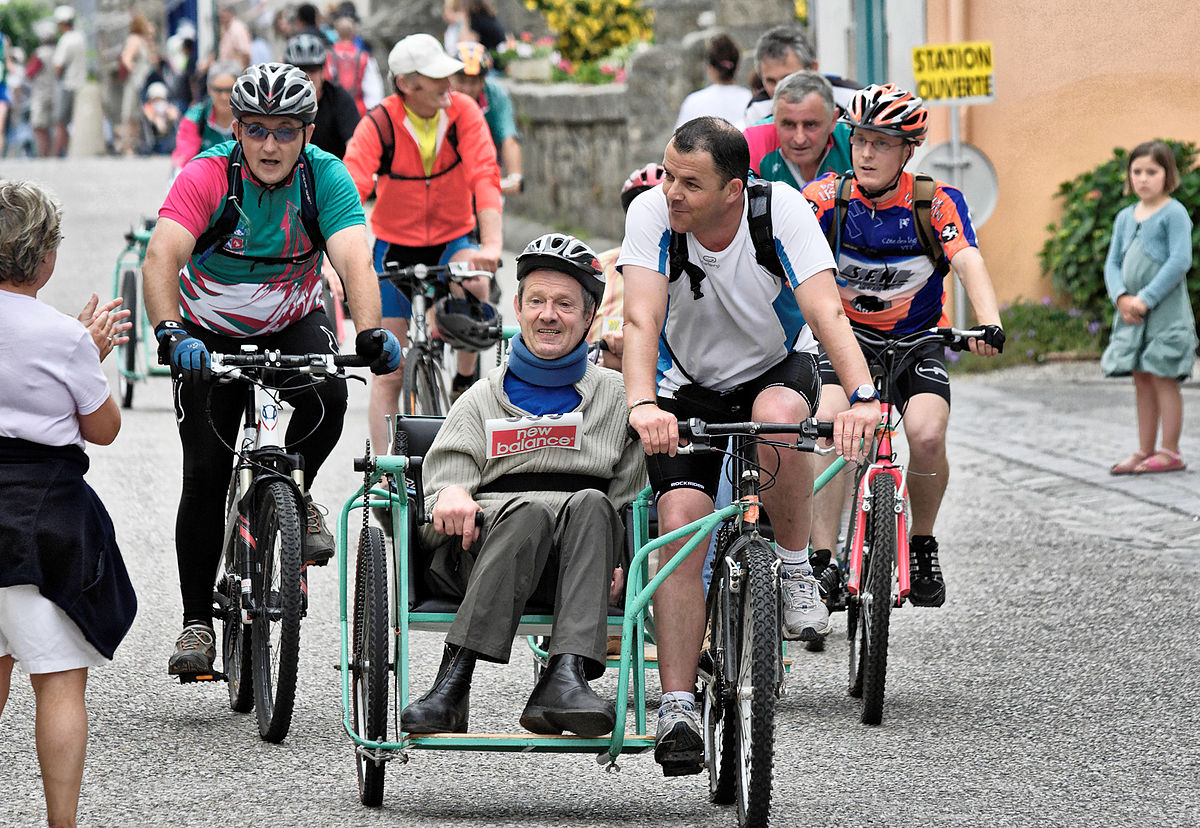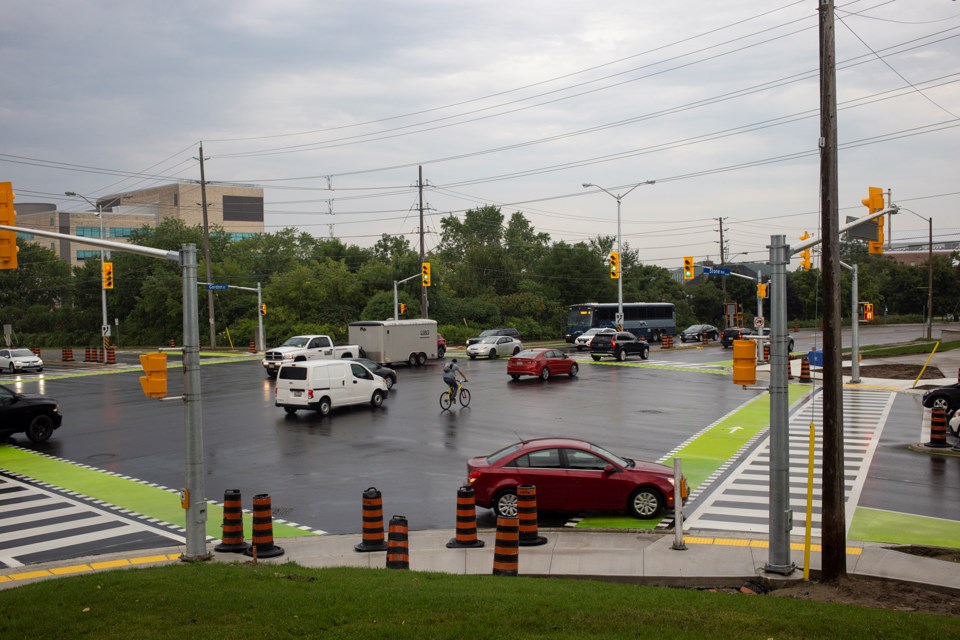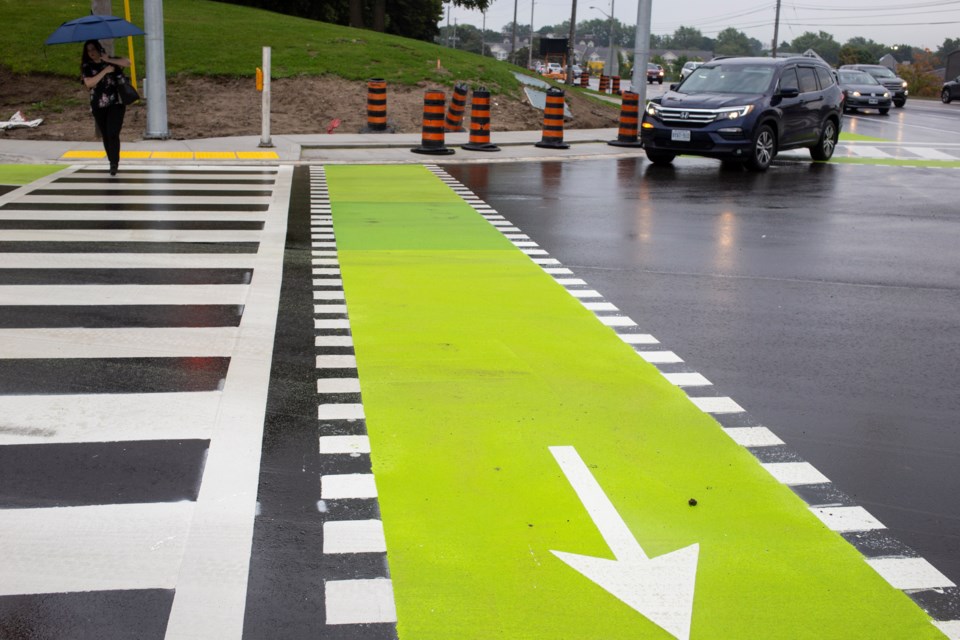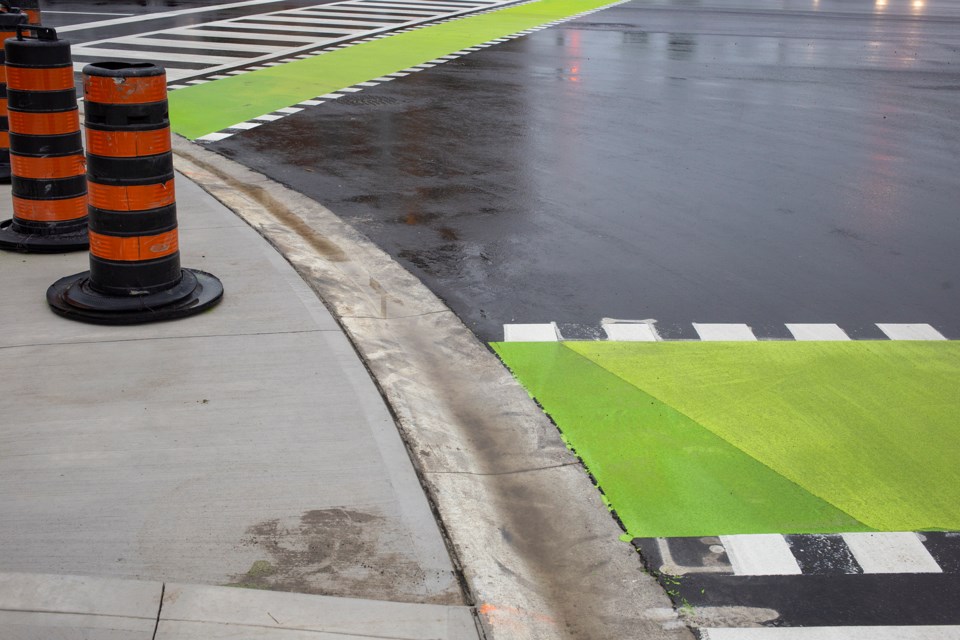[...]
Getting kids off their bikes before they cross the street essentially forces them to stop and look for traffic instead of riding straight through.
As adults it still makes sense to look for traffic, but the law doesn’t require that we get off our bikes to do it.
And while we’re on the topic of bikes and crosswalks ... cyclists are a sort of hybrid road-user – when they ride in the road they’re supposed to act like a car, and when they ride on the sidewalk they’re supposed act like a pedestrian. For some cyclists, this has led to a sort of schizophrenic behavior, switching between the two based on whatever seems most convenient at the time.
I can’t find a law that specifically states that cyclists can’t switch between being a vehicle and a pedestrian, but the law is pretty clear on rules for vehicles and rules for pedestrians.
The law states that “no person shall drive any vehicle on a sidewalk.” And just to make it clear,
the law specifically includes bicycles in its definition of a vehicle.
Maybe I’m reading too much into it, but it seems to me like once you commit to riding in the roadway, you’re required to act like a car and stay off the sidewalks. Likewise, if you decide to ride on the sidewalk, you’ve committed to behaving like a pedestrian.
The law prohibits pedestrians from darting unexpectedly into the roadway.
I can already hear the counter-argument; eventually a cyclist riding on the road will need to go onto the sidewalk. After all, we don’t have parking lots for bikes, except for bike racks that are located, you guessed it, on the sidewalk.
I also know that in a particularly dangerous stretch of road, a cyclist may choose to become a pedestrian for safety. But even if I’m wrong on the legal interpretation here, I’m right about the premise; it’s generally not safe for cyclists to switch back and forth from being a vehicle to a pedestrian.
I’ve mentioned before that predictability is a key to survival on the roads. The potential dual nature of a cyclist makes it even more critical to be clear about intentions. Switching from road to sidewalk and back to the road leaves motorists guessing, or worse, caught off guard.
Drivers also have responsibility. There is an assumption (possibly misplaced) that along with a driver license comes an understanding of traffic laws and a commitment to follow them. There should also be a realization that piloting two tons of steel presents a great risk to vulnerable road users, such as cyclists and pedestrians. The law places additional responsibility on the person with the ability to cause the most damage.
Whether you’re in a car, on a bike or walking, we’re all neighbors sharing the streets. And it’s going to take a commitment from all of us to end serious injuries and deaths on our roads, so be kind and drive wise.
Road Rules is a regular column on road laws, safe driving habits and general police practices. Doug Dahl is the Target Zero Manager for the Whatcom County Traffic Safety Task Force. Target Zero is Washington’s vision to reduce traffic fatalities and serious injuries to zero by 2030. For more traffic safety information visit
TheWiseDrive.com.
Ask a question.











